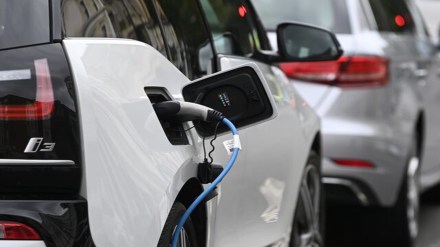By Vipin Sondhi & Geetanjali Kirloskar, Respectively chairman, Council on Green Mobility, CII Green Business Centre, & co-chair, Council on Green Mobility, and CMD, Kirloskar Systems Private Limited
India stands at a pivotal moment in its transition towards green mobility — an imperative not only for environmental sustainability but also for economic growth and global leadership in manufacturing and green technologies. The successful adoption of battery electric vehicles, plug-in hybrid electric vehicles, strong hybrid electric vehicles, fuel cell vehicles, and ethanol-driven vehicles (flex fuel vehicles or FFVs and electrified FFVs), along with compressed natural gas/liquefied petroleum gas-powered mobility solutions, will be instrumental in reshaping India’s transportation landscape while ensuring scalability and sustainability.
Given India’s diversity, geographically and in terms of mobility needs, our approach must be multi-faceted. The adoption of green mobility solutions will depend on specific user applications, from urban mobility and commercial fleets to personal vehicles and long-haul transport. Likewise, different segments — two-wheelers, three-wheelers, four-wheelers, light commercial vehicles, and buses — require tailored strategies for meaningful progress.
The last year has demonstrated the growing acceptance of electric mobility, thanks in large part to government schemes such as Faster Adoption and Manufacturing of (Hybrid) and Electric Vehicles II, PM Electric Drive Revolution in Innovative Vehicle Enhancement, and the National Electric Mobility Mission Plan. In 2024 alone, India saw substantial growth in EV sales across categories, with 1,149,182 two-wheelers, 691,340 three-wheelers, and 90,294 four-wheelers — an overall 27% increase compared to 2023, according to the Vahan Sewa dashboard. These numbers underscore the increasing consumer confidence and success of policy interventions in driving EV adoption.
Yet, to fully harness the potential of green mobility, we must address the roadblocks that deter mass adoption.
The CII Green Business Centre’s Council on Green Mobility recently did a comprehensive survey covering logistics service providers, e-commerce firms, aggregators, and consumers to gain deeper insights into the real-world challenges to EV adoption.
One of the primary challenges is high initial costs. Over 60% of respondents cited the higher upfront cost of EVs as a significant deterrent. While government incentives have helped lower costs, they remain insufficient for widespread adoption. Strengthening financing mechanisms and reducing capital costs through innovative financial models will be key to bridging this gap.
Another major concern for fleet operators and individual users alike is the reliability of EV batteries. Around 75% of fleet operators highlighted the lack of specialised technical expertise in EV fleet management, impacting operational efficiency. Strengthening battery management infrastructure and investing in skill development will be crucial to ensuring long-term sustainability.
Charging infrastructure limitations have been a crucial barrier where over 65% of fleet operators and aggregators found public charging stations were inadequate. Expanding the charging network is an urgent priority, particularly in non-metro regions, to ensure seamless EV adoption across the country. Addressing challenges such as space constraints, high set-up costs, and the need for technical standardisation will be critical in creating an efficient and accessible charging ecosystem.
Consumer confidence and charging time play a role in the decision to switch to EVs. While 60% of consumers already use EVs as their primary vehicles, concerns around charging time persist — with over 50% identifying charging durations exceeding four hours to be a major drawback. Advancements in fast-charging technology and improved battery efficiency will play a defining role in overcoming this challenge.
Government policies and subsidies have been pivotal in reducing the upfront cost of EVs, but sustained adoption requires a broader, multi-pronged approach. Strengthening the ecosystem beyond initial incentives will be critical to ensuring long-term success.
Expanding the public charging network is a key priority. As of June 2024, India had 27,471 charging points across 16,344 public charging stations, primarily in metro areas. By contrast, the European Union has over 630,000 public charging points, underscoring the urgency for India to accelerate infrastructure expansion. Innovative business models — such as battery swapping stations, decentralised charging hubs, and integrated smart grid solutions — can help overcome space constraints and improve accessibility.
Driving greater investment in R&D is equally crucial. Strengthening industry-academia collaboration and fostering intellectual property development will fuel advancements in battery efficiency, energy storage, and fast-charging technology. This will not only enhance performance but also reduce dependency on external supply chains, strengthening India’s self-reliance in green mobility solutions.
India has the potential to become a global leader in EV manufacturing, but achieving this requires strategic investments in technology, infrastructure, and human capital. The transition to EVs must go beyond environmental benefits to also drive economic competitiveness, job creation, and energy security. The success of this shift will hinge on collaboration between government, industry leaders, and research institutions.
As India marches towards 2047 and the vision of Viksit Bharat, its leadership in clean mobility will define its place in the global green economy. By addressing the financial, infrastructural, and technological barriers, India can unlock the potential of this transformative sector — creating a sustainable, economically vibrant, and forward-looking mobility ecosystem.
